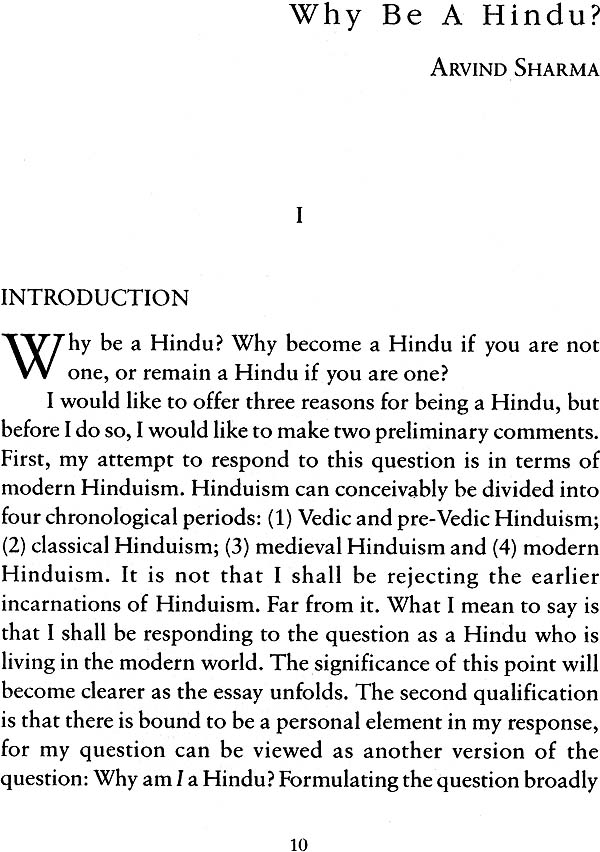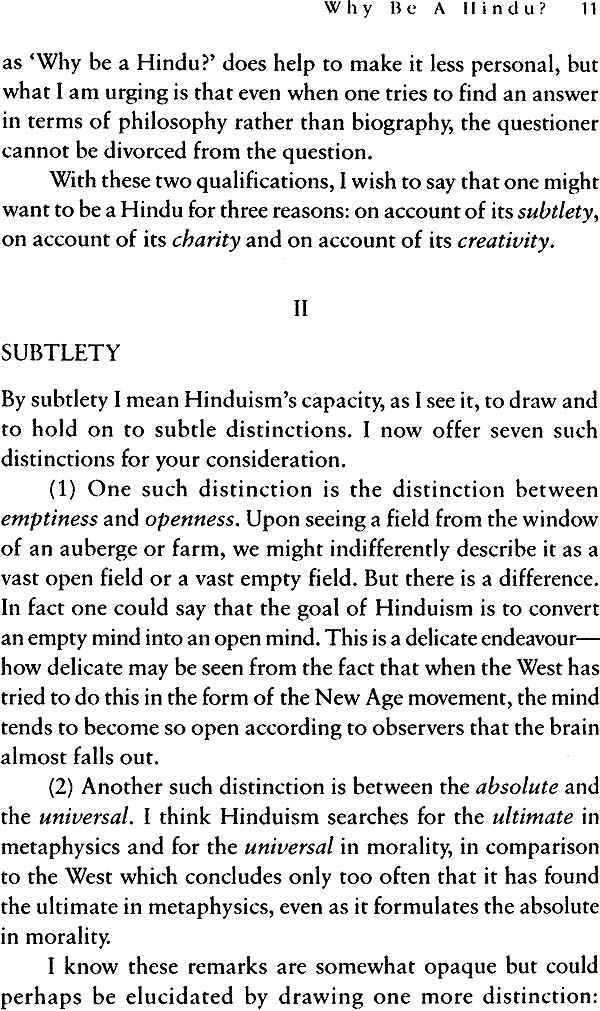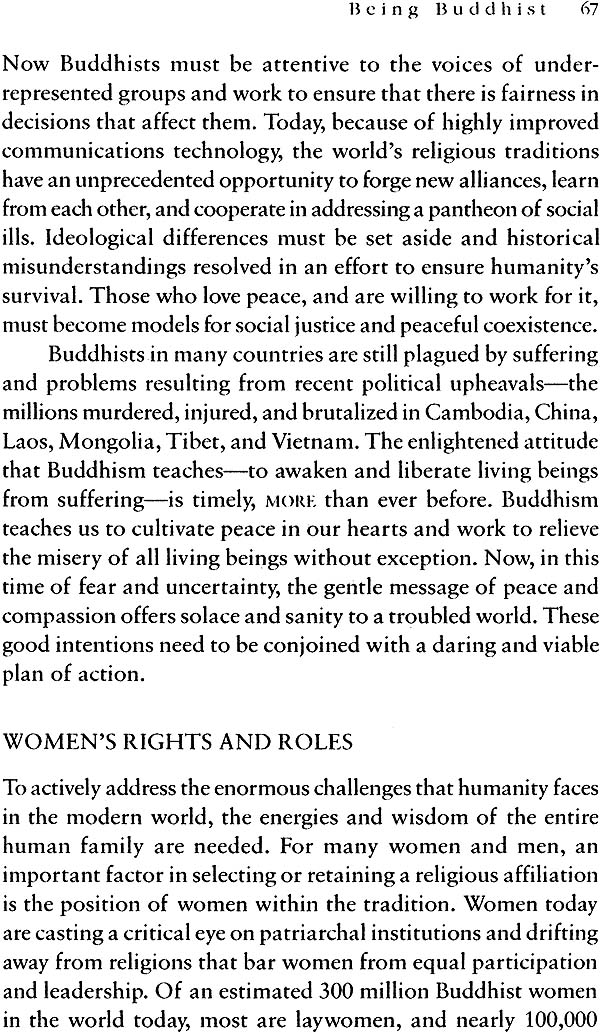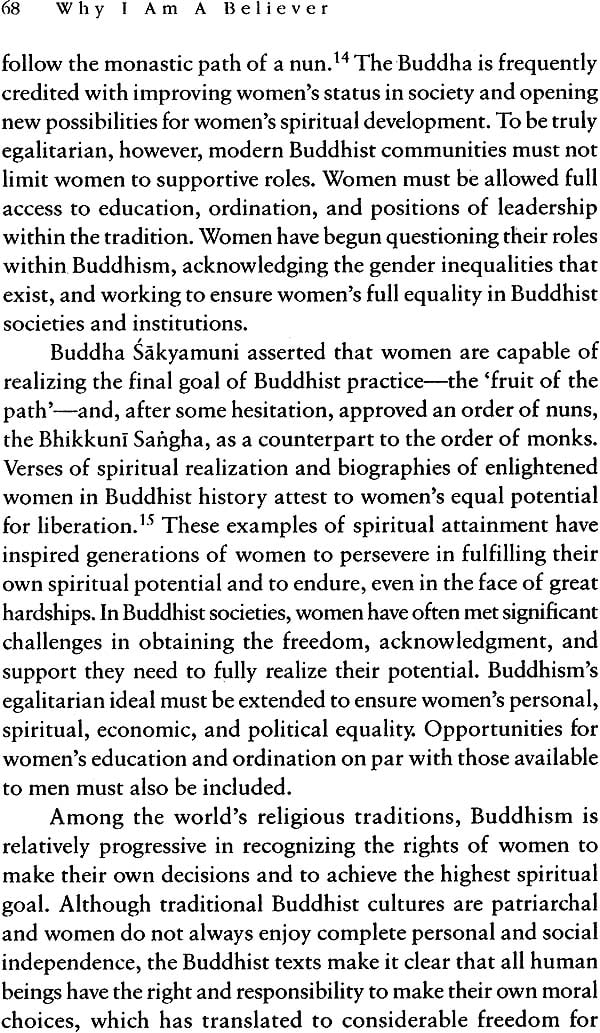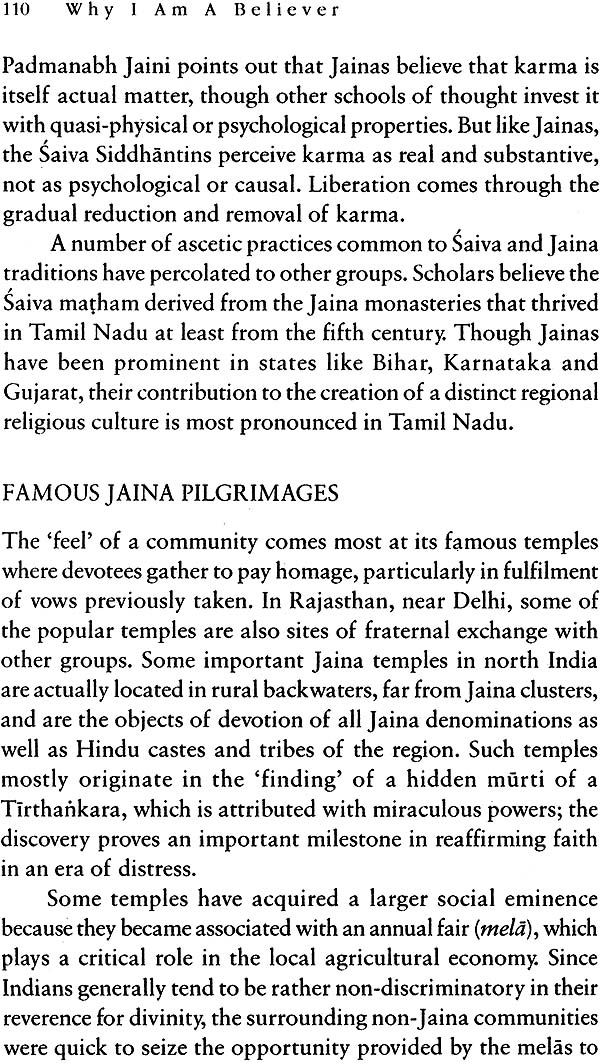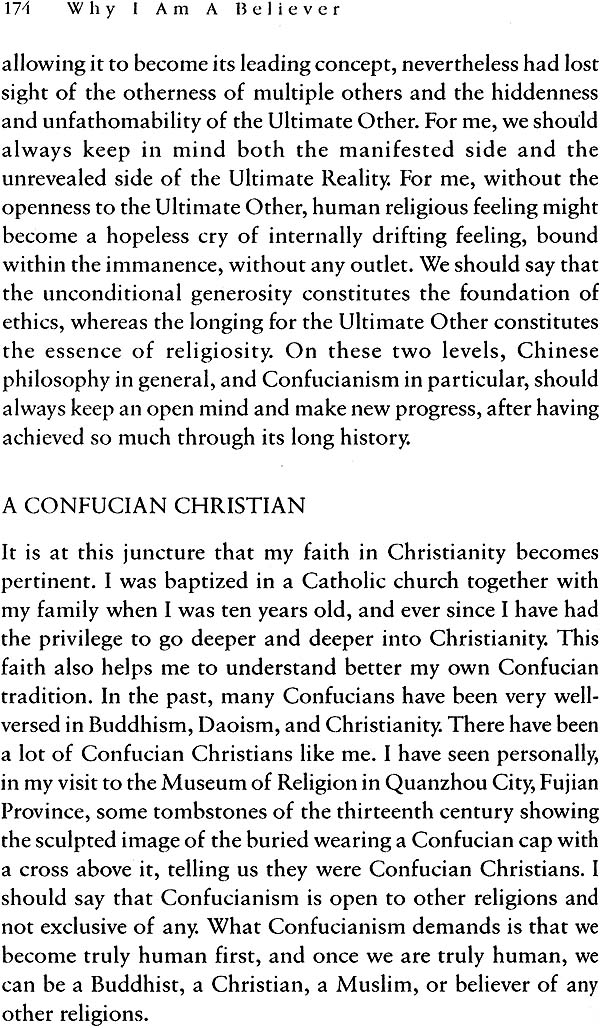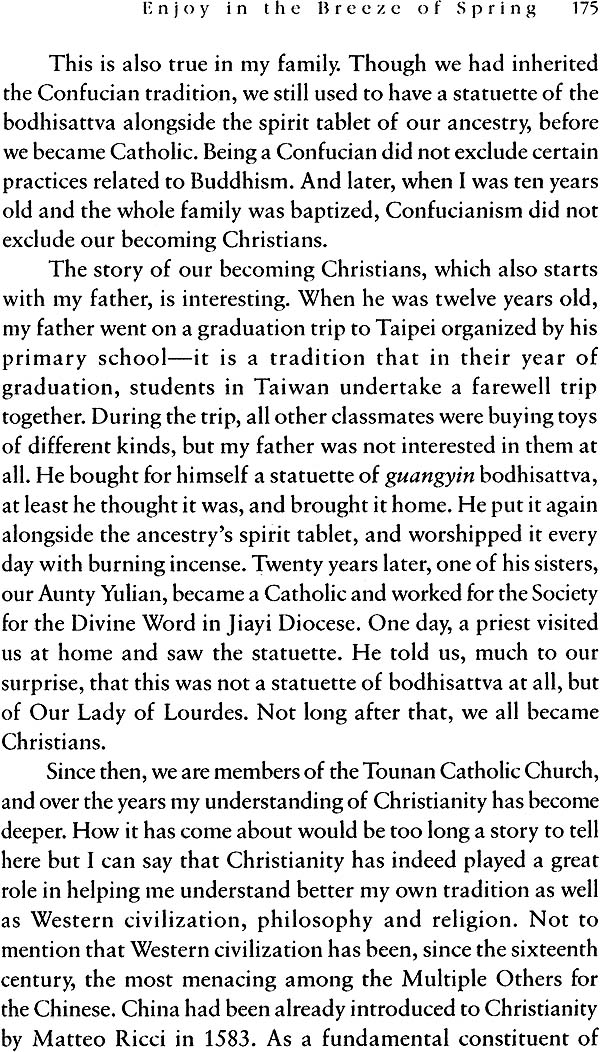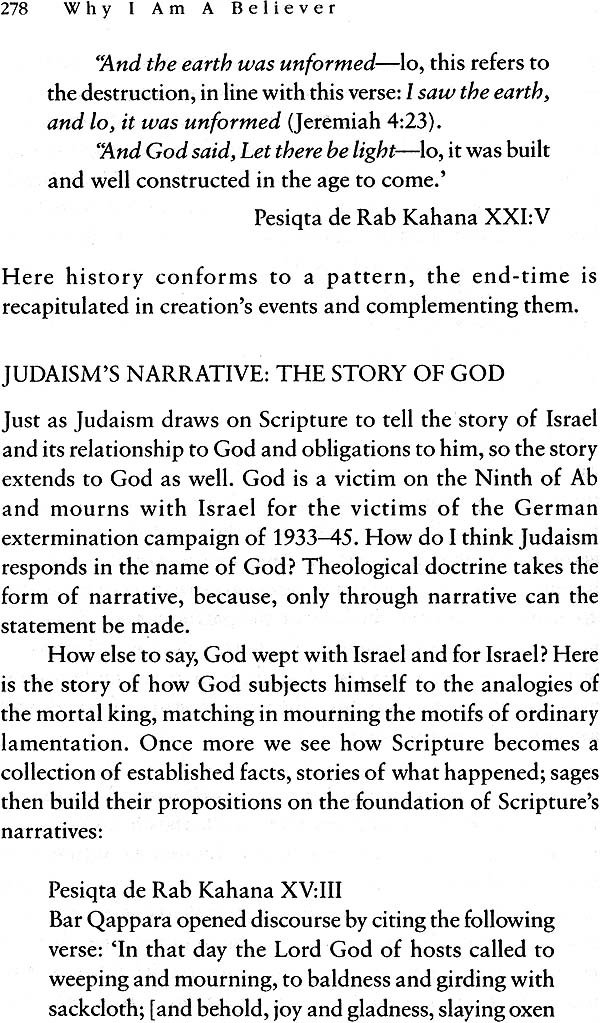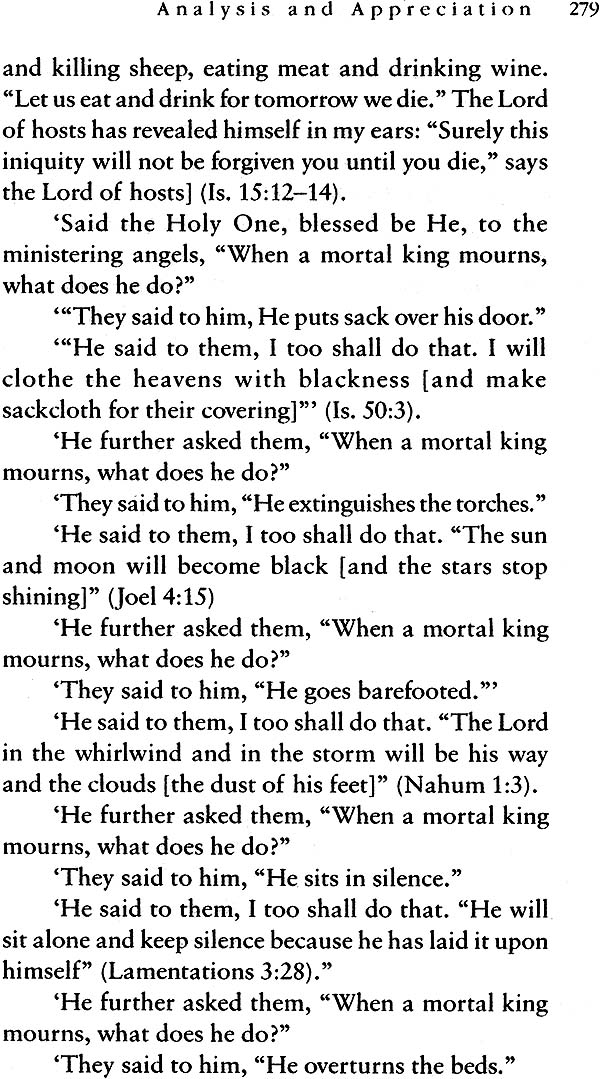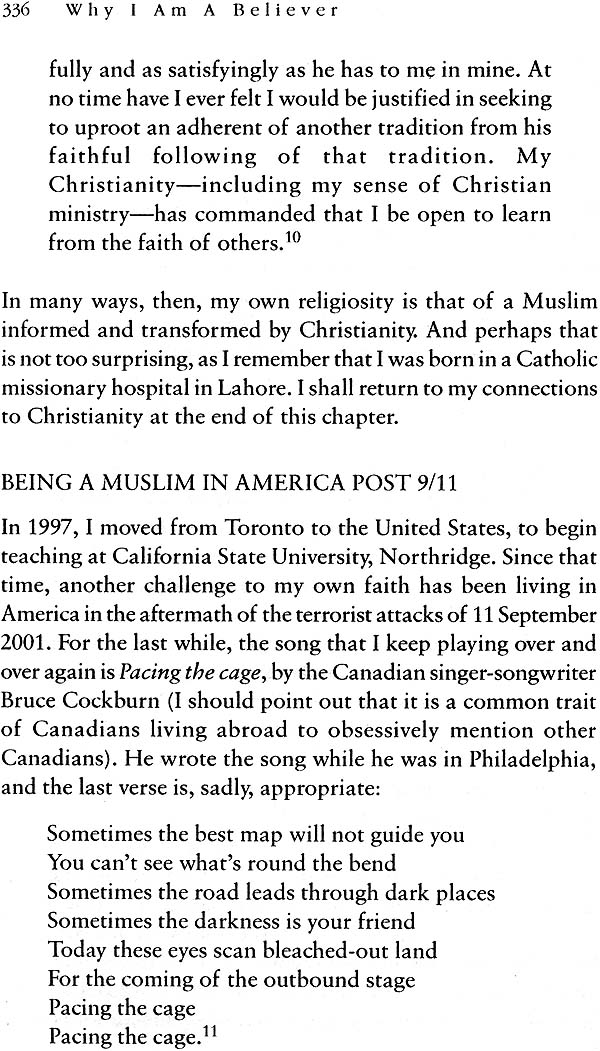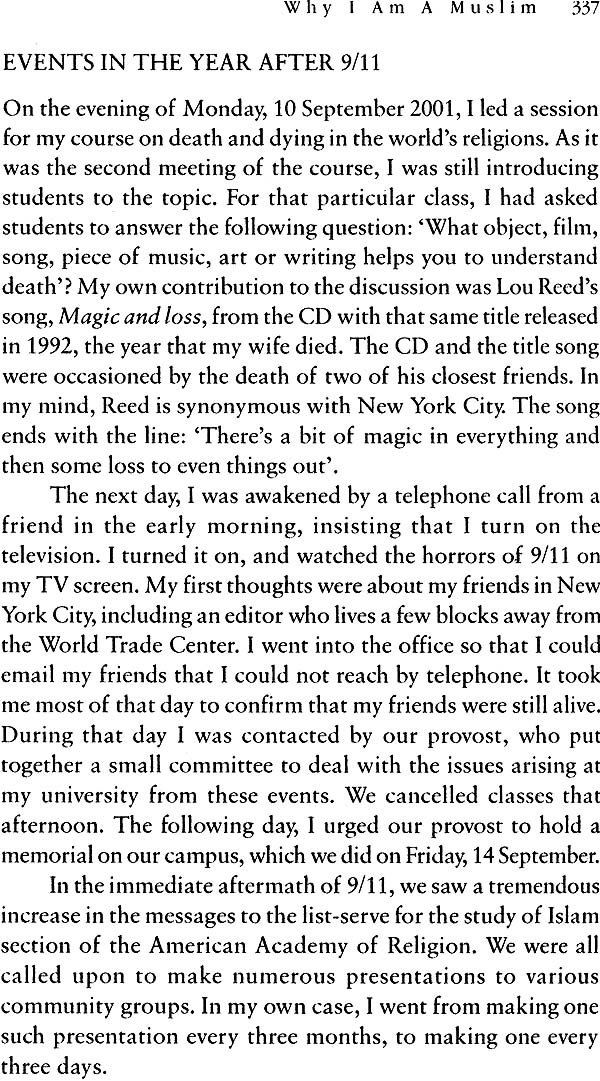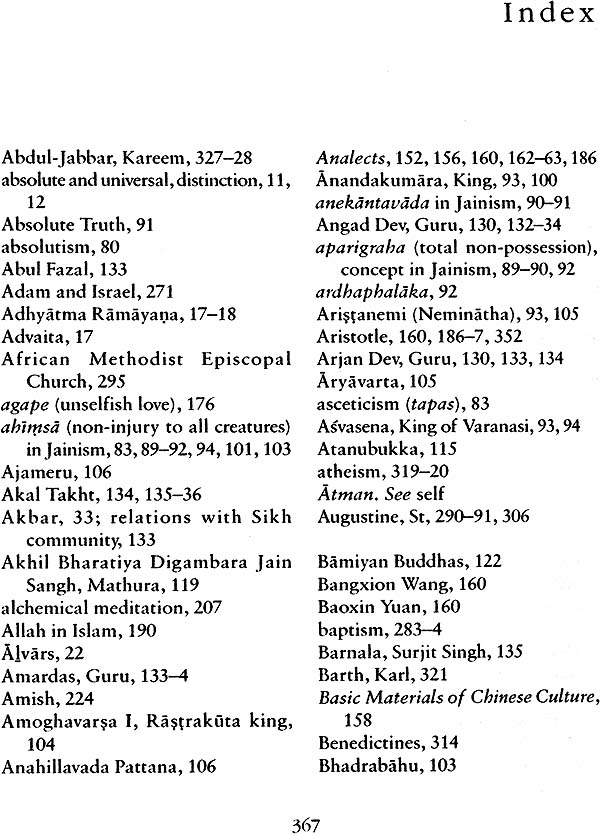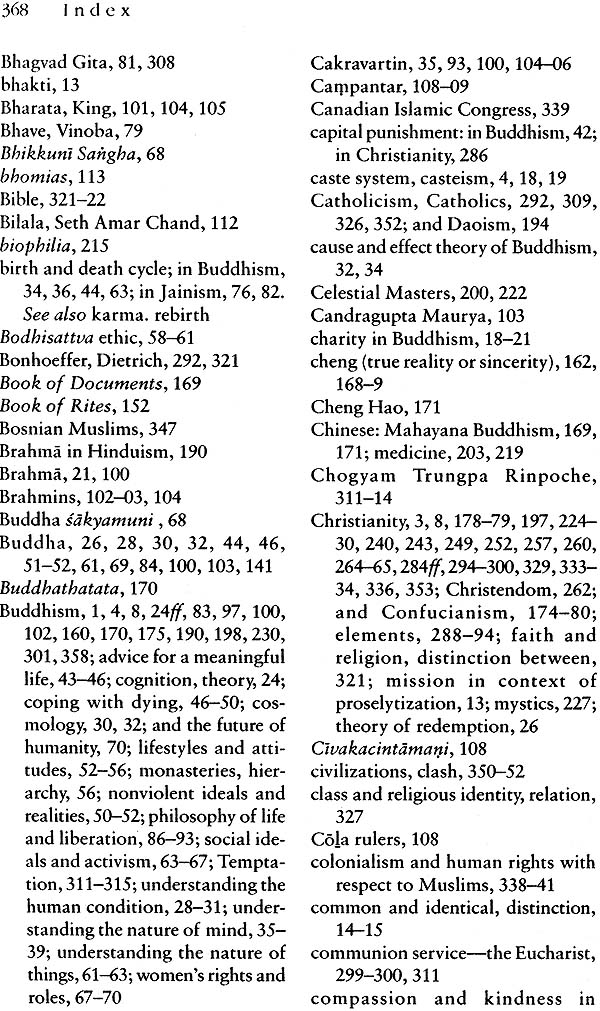
Why I Am A Believer (Personal Reflections On Nine World Religions)
Book Specification
| Item Code: | NAG235 |
| Author: | Arvind Sharma |
| Publisher: | Penguin Books India Pvt. Ltd. |
| Language: | English |
| Edition: | 2009 |
| ISBN: | 9780143066873 |
| Pages: | 384 |
| Cover: | Paperback |
| Other Details | 8.5 inch X 5.5 inch |
| Weight | 350 gm |
Book Description
The upsurge of religious fundamentalism-islamic, Hindu. Christian- worlswide. Especially post 9/11. Poses a strong challenge to a centuries-old religious pluralism. Over time, Buddhism, Islam and Hinduism, among other religions have travelled across continents and seekers moved East in search of truth and salvation. What does this presage for our religious life today?
In this collection of nine essays, prominent scholars share their experiences as followers of their religions, touching on such basic questions as why people believe and why they do not, how beliefs are affected by encounters with other traditions, and is it possible to be at home traditions, and is it possible to be at home in two or more traditions? The outcome is revealing.
Nun Karma Lekshe Tsomo, born Christian, embraces Buddhism for its philosophy of cognition and its values of compassion and equanimity that provide guidelines in every day contexts. Amir Hussain discovers the dialogic possibilities between Islam and Christianity, even as Harvey Cox considers Jesus’s kingdom of God as being a reality beyond-religion. Contemplative practices in Daoism draw Bede Bidlack closer to Christ, while for Vincent Shem, Western philosophy and being Christian deepen his understanding of Confucianism. Content within the tradition, Arvind Sharma finds Hinduism’s persisting appeal in its ‘civilizational creativity.’Likewise, the ritual fasting to death in Jainism, underlining its asceticism, appeals to Sandhya Jain. While encountering Islam through marriage, Kartar Singh duggal extols Sikh Gurus as Supreme, Jacob Neusner passionately tells of being one of the Israel, the holy people in search for meaning in history, for whom the Torah is all.
While celebrating their own faiths, these scholars appreciate how encounters with other traditions have enriched their beliefs. The contributors affirm that a plural perspective is the alternative to exclusiveness and its the path to the meaningful pursuit of religion in our troubled times.
Arvind Sharma, formerly of the Indian Asministrative Service (IAS), is the Bricks Professor of Comparative Religion in the Faculty of Religious Studies at McGill University in Montreal, Canada. He has also taught in Australia and the United States and has published extensively in the fields of religious studies and Indian Studies. He is currently engaged in promoting the adoption of a Universal Declaration of Human Rights by the World’s Religions. Two books edited by him. Women in World Religions (1987) and Our Religions (1993). Are widely used in teaching courses on world religions. He was the covener of a global congress on world’s Religions After September 11, which met in Montreal from 11 to 15 September 2006 and was attended by delegates from eighty-four countries.
My books on why Religion Matters serves a purpose, but it is abstract. This book is concrete by virtue of letting adherents of nine great faiths tell the reader in their own words why their religion matters to them. It thereby becomes a living testament of the way their respective faiths shape and inspire their own lives. This books means a lot to me and I strongly recommend it to the general public.
This book is inspiring, impressive, authoritatively written and rich in detail. I am sure it will build bridges among people of different faiths. It deserves to have a very wide readership
Religion remains one of the major elements in human civilization, along with the growth of technology and globalization. In this book, professor Arvind Sharma has brought together a series of articles on the major religions of the world. written by scholars who provide thought-provoking perspectives into contemporary rreligious studies. I am sure the book will be interest to a wide spectrum of students and practitioners of religions.
This is a fascinating collection of statements by adherents of nine religions, discussing frankly the strengths and weakness of their own faith, and why they remain within it in an age when we are all aware of the other world religions. Each is interesting in its own right, and together they illuminate the global religious situation in a new and thought-provoking way. I strongly recommend it.
This book, although intellectual in content, is existential in its origin. After having spent much of life studying world religions and comparative religion, I found myself facing a conundrum. The field of world religions, which was once called comparative religion and often still is, is almost routinely described as multi-traditional and poly-methodic in nature. What this means is that, in principle, it includes the two religions in its purview. Minimally, it includes the two religions from China, namely Confucianism and Taoism, and the three religions of the West-Judaism, Christianity and Islam. The primal religions or indigenous religious traditions (the right term is under scholarly negotiation) have now crossed the threshold into the charmed circle of the world religions, and the two other religions of India-Jainism and Sikhism –and Shinto-the religion from Japan have long been almost within it. This has led to a subtle distinction being drawn in the field between ‘world religions’ and ‘religions of the world’. The latter expression represents the other end of the spectrum and includes maximally or in principle all the religions of the world, while the former tends to limit them to the various traditions listed earlier give or take a few. The fields of religious studies thus exposes one in principle to the entire religious heritage of humanity, in all its diversity and richness. The follower of one religion is exposed to all of them, in all their grandeur.
At the same time, the field of study is also described as poly-methodic. What this means is that one studies not only the various religions of humanity, one also studies them through an array of methods usually labeled the historical the phenomenological, the sociological, the anthropological, the hermeneutical, the philosophical and so on. Thus, the field offers two abundances: not only do the various religions of the world fall within its scope, its ample bosom also includes the numerous methods which can be brought to bear on their study.
The existential situation I refer to alludes to the fact that the student of religions, who usually has a religious persuasion of his or her own, ultimately finds himself or herself standing on the crosswords amidst all this heavy traffic. The student or scholar is confronted , on the hand, with all these religions of the world other than his or her own, as possible options for one’s religious affiliation. At the same time, the person’s confidence in his or her own religion is also put to test by many of the methods, some of which are reductive in nature. That is to say, they claim that the ultimate nature of religion is not religious and may in fact in some sense be ‘secular’ and ultimately traceable to psychological, or social, or even economic factors, thus the person may feel ravished by the attractions of the various other religions, even as the loyalty to his or her own religion is being tested! And the charms of the other could become irresistible, when combined with disenchantment towards one’s own object of affection!
The sence has obviously been presented as more rich in romantic possibilities than actually be the case. For instance, as one studies one’s own tradition, one could become more enamoured of it, like falling in love once again with one’s wife, and all the attractions of the other may only whet one’s appetite for one’s own. And if some methods may undermine a native faith in one’s own faith they may do the same other faiths. Nevertheless, it seems to me a remarkable existential fact that most people who study would religions, or those who are exposed to them in other ways, often do not think of cheating on their spouses, as it were, and remain faithful to their own religious tradition.
What secret charm does our espoused religion hold for us, to keep us wedded to it in this way, despire all the temtations and disappointments? The various contributors to this volume were requested to explore this fact.
| Introduction | 1 | |
| 1 | Why Be A Hindu | 10 |
| 2 | Being Buddhist | 24 |
| 3 | Why I Am a Jaina | 75 |
| 4 | Why I Am a Believer | 127 |
| 5 | Enjoy In The Breeze Of Spring-living In The Confusion Tradition | 150 |
| 6 | Daoism Today: Ancient Craft In The Modern Age | 191 |
| 7 | Analysis And Appreciation the Case of Judaism | 235 |
| 8 | Why I Am Still A Christian | 282 |
| 9 | Why I Am A Muslim | 325 |
| Notes On Contributors | 362 | |
| Copyright | ||
| Acknowledgement | 366 | |
| Index | 367 |
Q
